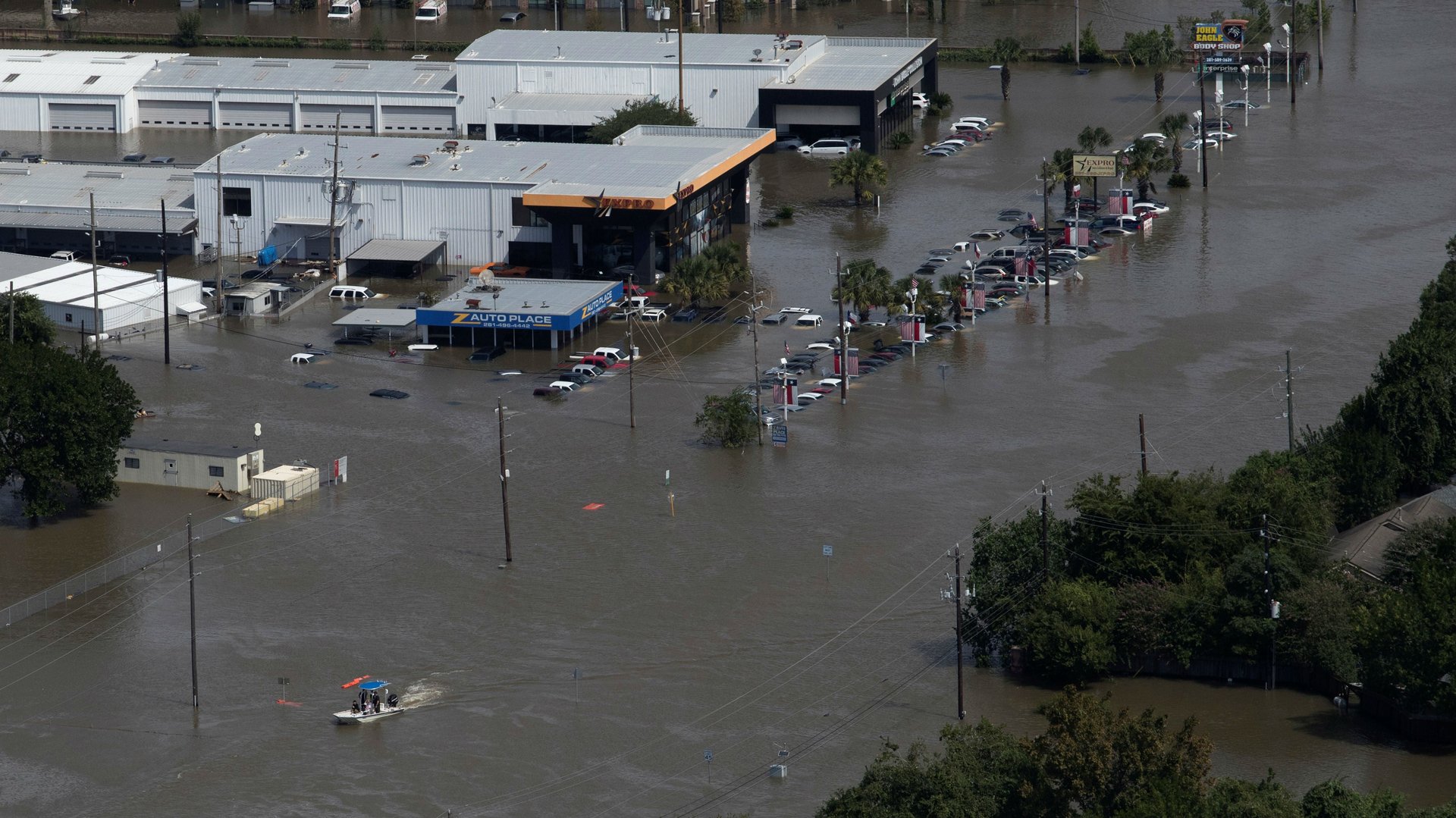Houston hospitals kept patients safe during Harvey thanks to years of forced team bonding
The destruction resulting from Hurricane Harvey is horrific. At least 39 people have perished. Billions of dollars of damage have been done, with at least 50,000 homes in the southeastern part of Texas completely ruined.


The destruction resulting from Hurricane Harvey is horrific. At least 39 people have perished. Billions of dollars of damage have been done, with at least 50,000 homes in the southeastern part of Texas completely ruined.
Medical facilities in the area have had to act quickly to keep patients safe amid the disaster. As of Aug. 31, 25 hospitals in the area have been closed or evacuated in some way. In total, these facilities planned to move some 1,500 patients—a decision that wasn’t made lightly because it can sometimes be more dangerous to sick patients to move than to wait a hurricane out. There were roughly 140 emergency rescue missions, including an entire nursing home where residents were trapped in standing water for 24 hours.
But it could have gone a lot worse. To put it into context, there are roughly 120 hospitals in the southeastern section of Texas, according to Darrell Pile, the leader of the Southeast Texas Regional Advisory Council (SETRAC), which operated the Catastrophic Medical Operations Center in charge of leading hospital responses to emergencies. Additionally, in the 25 hospitals that did evacuate, not all of the patients planned to move actually ended up moving. CNN reports that so far, roughly 1,000 patients have been transported to other hospitals. Doctors likely assessed that some patients could actually be safely treated where they are, and that supplies were more secure than they thought (no one ended up going without food at Ben Taub Hospital in Houston, Pile says). Those who were living in the flooded nursing home now are okay in the hospital in which they were placed.
In previous storms, medical facilities didn’t respond as well. A study (pdf) done by the US Department of Health and Human Services after Superstorm Sandy struck the east coast in 2012 found that 89% of hospitals in the area had “substantial challenges” in the storm, including infrastructure breakdown, power outages, and disputes over resources.
When Hurricane Katrina hit Louisiana in 2005, it basically destroyed the entire New Orleans hospital system. According to a report (pdf) from the Urban Institute, there were 10 hospital evacuations of not just patients, but thousands of other people who had looked to hospitals as safe havens when their homes were destroyed. There was one report of an emergency surgery that took place by flashlight without adequate anesthesia.
These types of horror stories haven’t happened in Texas so far—at least as far as officials are aware. “We were really well prepared,” Kimberly Megow, the chief medical officer working at Doctors Regional hospital in Corpus Christi, Texas, told the Washington Post. Megow’s hospital was hit by the storm, but has remained open and has been treating patients—including mothers who went into labor—since the storm hit. Their backup generators started up almost as soon as the power went out. “Hospitals really are the place of last resort for any patients in the community. We’re a safety net. We always have to be ready. We can’t close.”
“For the most part our hospitals are all back up,” Pile says. “I would expect that 90% to 100% of our hospitals will be fully operational within another week or two.” (This is slightly more optimistic than what he told STAT, where he estimated 90% to 95% of hospitals being fully operational once more after a month.)
The southeastern region of Texas (one of eight in the state), is divided into five different corridors based on where highways cut through the land. Each of these five corridors has its own fire departments, hospitals, police, and other first responders. Once every two months, the entire teams for each of these corridors meet with each other to discuss any problems they’ve seen with previous drills, recent events, or past disasters. Every three months, the teams from all five corridors meet up to discuss the same issues on a larger scale.
All these regular meetings ensure that every group is aware of their strengths and weaknesses and trust each other more, which makes collaboration go a lot more smoothly. “They know each other well,” Pile says. Personal connections among different response teams leads to more humility overall. In other situations, departments might have been hesitant to ask for help from others because it would be seen as a shortcoming, Pile says. But that wasn’t the case in Texas. As a result, the primary focus of any rescue operation is the people who need help—as it should be.
Providing patient care during Harvey has not been easy, and civic teams in the area aren’t done yet. There’s no current count on injuries and deaths from the storm, but counts are constantly updated to reflect more as they come into hospitals. Even after the waters clear, there will likely be an uptick of patients sick with illnesses borne by mold and mosquitos.
On the morning of Aug. 31, SETRAC held a meeting to check in with each hospital to see if there are any major supply shortages; notes from that meeting aren’t yet available, but Pile predicted the biggest problem is going to be personnel relief. Those who worked throughout the storm have been away from their loved ones for days, and need their own rest and recovery time.
But he’s hopeful that collaboration will continue to go well, thanks to the relationship these individuals have built with one another over repeated meetings for the past seven years. “I can’t overstate the importance of responders knowing each other in advance and forming relationships in advance of a crisis,” he says.